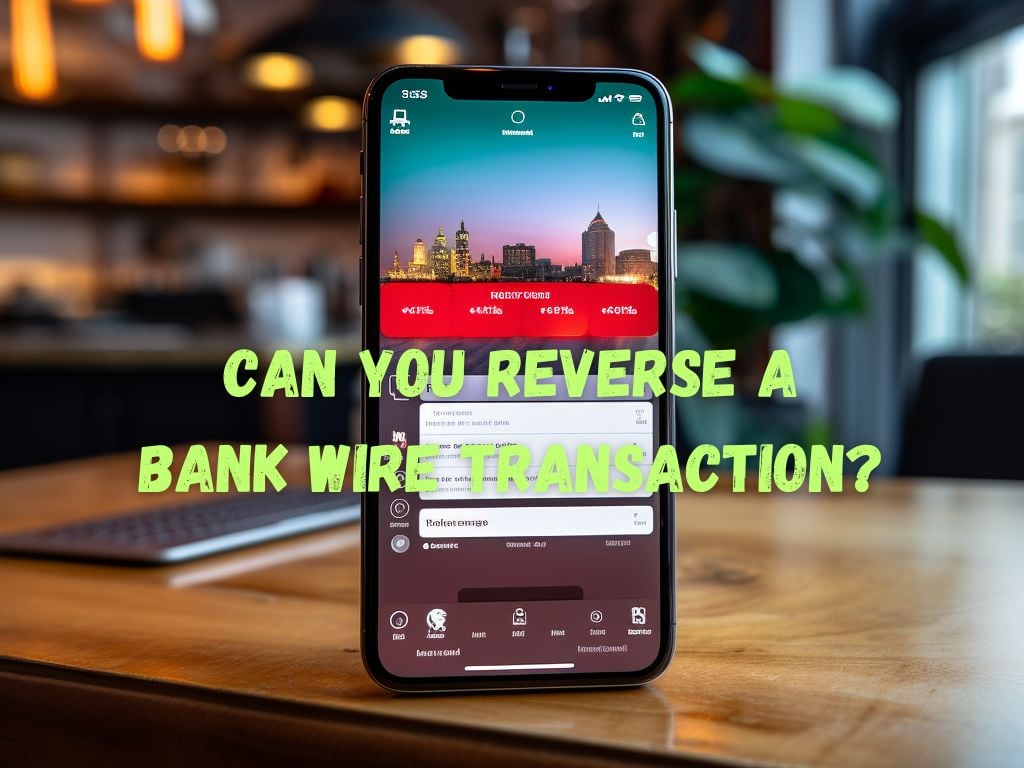Bank wire transactions have become a popular way to transfer funds quickly and securely.
However, there may be instances where you find yourself needing to reverse a wire. But, can you reverse a bank wire transaction?
In this article, we will explore the possibilities of reversing such transactions, understand the limitations involved, and provide tips on how to handle various scenarios effectively.
Can you reverse a bank wire transaction?
Contrary to popular belief, bank wire transactions are generally irreversible. Once the funds have been sent and received, they are considered final.
However, there are situations where reversal is possible.
Duplicate wire transfers
One common scenario where a wire can be reversed is when a duplicate transfer occurs.
This can happen due to technical errors or miscommunication. In such cases, contacting the bank involved immediately is crucial. They may be able to reverse the duplicate transaction and return the funds to your account.

Errors made by the sender or receiving bank
If an error has been made by either the sender or the receiving bank, there is a possibility of reversing the transaction. It could be a simple mistake, such as entering an incorrect account number or amount.
Promptly contacting the bank and providing them with accurate information can increase the chances of the transaction being reversed.
Fraudulent wire transfers
In the unfortunate event of a fraudulent wire transfer, there is a possibility of reversing the transaction, but time is of the essence. Acting quickly is vital to increase the chances of recovering the funds.
Contact your bank immediately and provide them with all the necessary details and evidence of the fraud. They will work with you to reverse the transaction and mitigate the loss.
Collaboration between banks
In certain situations, where there is cooperation between banks, a wire can be reversed. This usually happens when both the sending and receiving banks agree to cancel or reverse the transfer.
However, this process is not guaranteed and often requires extensive communication and coordination between the banks involved.
Steps to reverse a bank wire transaction
To reverse a wire transaction, follow these steps:
Contact the bank involved
The first step in attempting to reverse a wire is to contact the bank involved. Prompt communication is crucial as time is of the essence, and the longer you wait, the harder it becomes to recover the funds.
It is important to provide the bank with all the necessary information, including the reason for the reversal, the amount, and the recipient’s details.
Reporting fraudulent activity
If the transaction was fraudulent, it is essential to report it to the bank immediately. The bank will likely ask for supporting documents and evidence, such as screenshots, receipts, and email exchanges, to verify the fraudulent activity.
It is also important to involve law enforcement agencies and provide them with all the relevant details to increase the chances of recovering the funds and holding the perpetrators accountable.
Freezing or recalling funds
If you suspect fraudulent activity or an error made by the sender or receiving bank, ask the bank involved if it is possible to freeze or recall the funds.
This can help prevent the recipient from accessing the funds until the situation is resolved.
Note that not all banks offer this option, and the decision to freeze or recall the funds ultimately rests with the bank.
Cooperation with law enforcement agencies
In cases of fraudulent activity, it is essential to involve law enforcement agencies. Provide them with all the necessary information and evidence of the fraud.
This may include reporting the incident to the Federal Bureau of Investigation (FBI), the Federal Trade Commission (FTC), and other relevant agencies. The more information and evidence you provide, the higher the chances of a successful recovery.

Limitations and challenges in reversing wire transactions
While reversing a wire is possible in certain situations, there are limitations and challenges to consider:
Time-sensitive nature of the process
Reversing a wire is time-sensitive. The longer you wait to report the issue, the harder it becomes to recover the funds. Promptly contacting your bank is crucial to increase the chances of a successful reversal.
Difficulties in retrieving funds once received by the recipient
Once the recipient has accessed the funds, reversing the transaction becomes significantly more challenging. In such cases, you may need to rely on the recipient’s willingness to cooperate or seek legal recourse.
Note that involving law enforcement agencies may increase the likelihood of success.
Legal implications and jurisdictional considerations
Reversing a bank wire transaction may involve legal complexities, especially in cases of international transfers. Jurisdictional differences and the laws governing the transaction can impact the feasibility of reversal.
It is important to consult with legal professionals familiar with international banking laws in such situations.
Limited options for reversal
It is important to note that wires are generally irreversible. While certain situations such as duplicate transfers, errors, and fraudulent activity may allow for reversal, the options for reversal may be limited.
Working with the bank and law enforcement agencies to explore alternative solutions, such as freezing or recalling the funds, is crucial.
Tips for preventing the need to reverse bank wire transactions
While it is not always possible to prevent the need for reversing bank wire transactions, following these tips can help minimize the risk:
Double-check transaction details
Before initiating a wire, carefully review all the details, including the account number, recipient information, and amount, to ensure accuracy. Simple mistakes, such as entering the wrong account number, can lead to the need for reversal.
Utilize secure payment platforms
Consider using secure payment platforms that offer additional layers of protection, such as fraud monitoring and dispute resolution services.
These platforms can help minimize the risk of fraudulent activity and provide a more secure and streamlined transaction process.
Verify recipient information
Prioritize verifying the recipient’s identity and bank account details to avoid sending funds to the wrong person or account. Be cautious of unsolicited requests for wire transfers and never share personal or financial information with unverified parties. Call to verify wire information.
Stay vigilant against scams
Scammers often use wire bank transfers as a means of stealing funds. Be wary of unsolicited calls, emails, or messages requesting money, and always verify the authenticity of the request before sending any funds.
Additionally, stay up-to-date on the latest scam tactics and educate yourself and your loved ones on how to avoid them.

Frequently Asked Questions
Can you reverse a wire at Wells Fargo and Chase?
Yes, it is possible to reverse a wire at Wells Fargo and Chase, but it depends on the specific circumstances.
Contacting the bank as soon as possible and providing all the necessary details will increase the chances of successfully reversing the transaction.
Can you reverse a bank transfer if scammed?
If you have been scammed through a bank transfer, it is essential to contact your bank immediately. They will guide you through the process of reporting the fraudulent activity and work with you to reverse the transaction, if possible. Act quickly to improve the chances of recovering your funds.
Can a wire transfer be reversed once sent?
Generally, wire transfers cannot be reversed once sent. However, as discussed earlier, certain situations such as duplicate transfers, errors, fraudulent activity, or collaboration between banks may allow for the reversal of a wire transfer.
Acting promptly and following the necessary steps can increase the likelihood of a successful reversal.
How can I cancel a wire transfer at Bank of America?
To cancel a wire transfer at Bank of America, contact the bank’s customer support as soon as possible. Provide them with the relevant details and explain the situation.
They will guide you through the necessary steps to attempt a cancellation or reversal.
Conclusion
While wires are typically considered final, certain situations may allow for their reversal.
Understanding the possibilities and limitations involved is crucial in handling such scenarios effectively.
By acting promptly, collaborating with your bank, and following the necessary steps, you can increase the chances of reversing a bank wire transaction successfully.
Additionally, taking proactive measures to prevent the need for reversal, such as double-checking transaction details and using secure payment platforms, can minimize the associated risks.


 Tags:
Tags:










